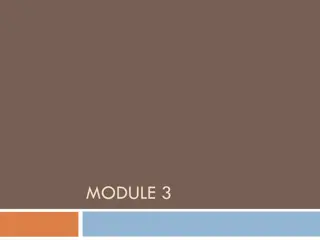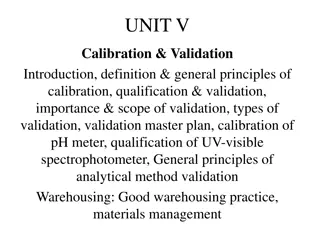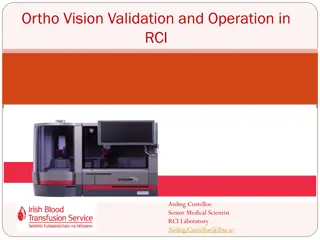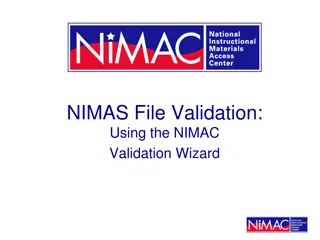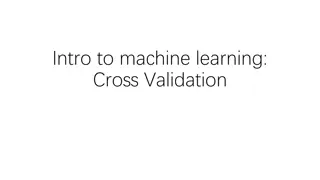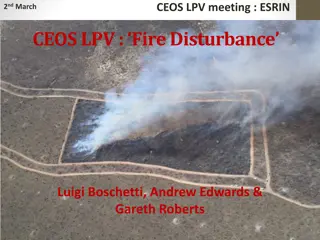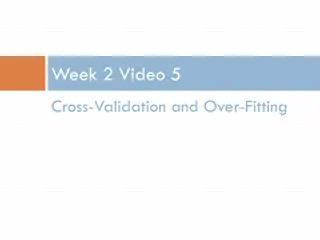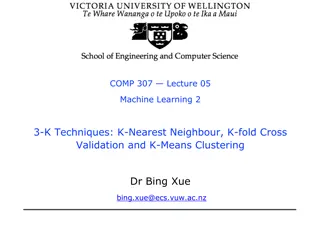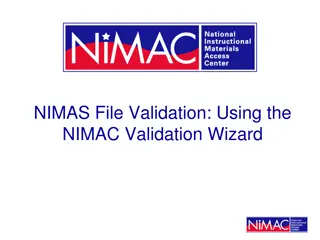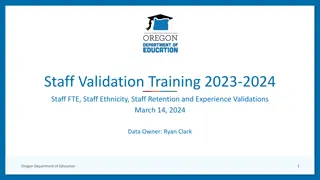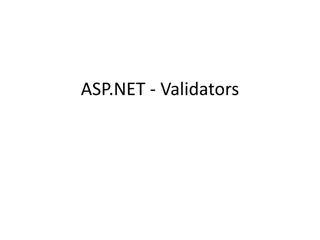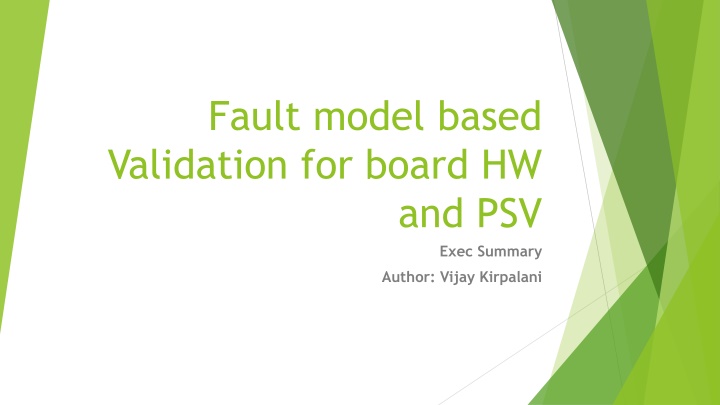
Fault Model Based Validation in Hardware Boards
"Discover the motivation and methodology behind fault model based validation for hardware boards, aiming to enhance test coverage and predictability in identifying faults in designs. Learn about the concept of fault models and the process of creating HW models for effective validation."
Download Presentation

Please find below an Image/Link to download the presentation.
The content on the website is provided AS IS for your information and personal use only. It may not be sold, licensed, or shared on other websites without obtaining consent from the author. If you encounter any issues during the download, it is possible that the publisher has removed the file from their server.
You are allowed to download the files provided on this website for personal or commercial use, subject to the condition that they are used lawfully. All files are the property of their respective owners.
The content on the website is provided AS IS for your information and personal use only. It may not be sold, licensed, or shared on other websites without obtaining consent from the author.
E N D
Presentation Transcript
Fault model based Validation for board HW and PSV Exec Summary Author: Vijay Kirpalani
Vijay Kirpalani Contact 9739175785 e-mail vijaykirpalani@gmail.com 24 Years of Industry experience in the HW/system software/networking/telecom domain Driven HW ( Board ) validation and ASIC (Post silicon validation) projects from conception to customer delivery (FCS). Interacted closely with HW qualification teams and the manufacturing teams to help resolve issues found during the validation and manufacturing production testing environment. Developed/lead networking products/features for Enterprise switches, Access Routers, Core Routers, Line Cards Hardware busses I2C, PCI, SPI, High speed serdes. Board validation involving Ethernet PHY devices (1G/10G/ 100G) from Vitesse, Broadcom. NPUs from Broadcom ARAD /QMX. Device Drivers for SONET, Ethernet, T1/E1 and HDLC devices. CPU Intel Broadwell, Freescale/NXP P2020, T1042, IBM PowerPC 740-710, P2020, T1042, MCF 5272, and ARM based. Operating Systems Linux, VxWorks 5.x, HCL Embedded OS, AIX, Solaris, HP-UX 9.x, and Windows NT. Education B.E. Electrical Engineering R.E.C. Tiruchirapalli (1991) MS Computer Engineering Louisiana State University (1993) Research Paper Published in IEEE Transactions on Computers http://ieeexplore.ieee.org/xpl/freeabs_all.jsp?tp=&arnumber=536239&isnumber=11374
The motivation behind fault model based validation While working on Board Diagnostics/Validation software , found that: We had no deterministic way to arrive at test coverage for a given HW design and its associated faults In the course of validation of the board, issues show up that the test case did not intend to find. The Diagnostics validation found an I2C rise time fault on a proto board, 18 months after PON. Intermittent Traffic /packet drops and (CAUI4) link flaps show up after several days of run in the regression setup during our testing of the proto HW. The motivation behind fault model based validation is to have a predictable method or process with tests with intent to catch all the possible faults that can occur in a design, rather than finding it by accident.
What is a fault model ? Real defects are too numerous ( at transistor level itself there could be so many possible defects). A fault model is an abstraction, for example a stuck-at-1 fault. There could be so many defects at the electrical layer, but functionally they can be represented as a stuck-at fault. This kind of abstraction makes it easier to analyze and Makes it possible to identify specific targets for testing. It makes it possible to build test algorithms to sensitize the faults.
Methodology Creation of HW models (functional, behavioral, timing) or HW design abstractions Fault modeling based on the HW model. Fault insertion in the system verilog environment Test algorithm development to detect the faults inserted in system verilog environment The test algorithms are then ported to the target board.
Typical board/hardware validation flow The typical process flow for hardware/board validation is illustrated above. The next slide provides information on the enhanced work flow which includes fault modelling.
Enhanced Work flow Validation Plan development Validation SW development Board bring up & Validation HW Design Integration into board validation code Fault Model development for key interfaces Test algorithm implementation Test algorithm development
Summary of benefits Predictable method to arrive at possible faults and test to sensitize them Helps find HW design issues early in the cycle, avoiding last minute surprises This helps keep the schedule and cost under control Usage of simulation environment for test algorithm development Faults can be inserted easily in simulation environment. This would be difficult and complex to do on the real board. Tests and test algorithms are proven prior to board arrival in a Verilog simulation environment. Prevents time consuming debug cycles for unit testing and debugging the test code.
Fault model for I2C interface I have created behavioral model based on the I2C specification Functional model based on open source I2C implementation Structural analysis based on the I2C specification Timing model is leveraged from the specification. I have created Fault models based on the above HW models
Test algorithms developed The following faults have been inserted in the system Verilog environment, and test algorithms to detect them have been developed. Reset line fault The reset line that is used to reset the master could have a fault Duplicate slave fault Mistakes in the hardware hookups could result in duplicate slave Jitter fault The deviation of the time interval edge of the SCL clock from its ideal position Is the fault under consideration here. Rise time fault The SDA has a rise time violation. Setup time fault The setup time for the repeated START is violated. Propagation delay fault The time taken to traverse the path is such that the signals crosses the clock period. Master arbitration fault In the multiple master scenario, the master that loses the arbitration does NOT turn off its SDA.

